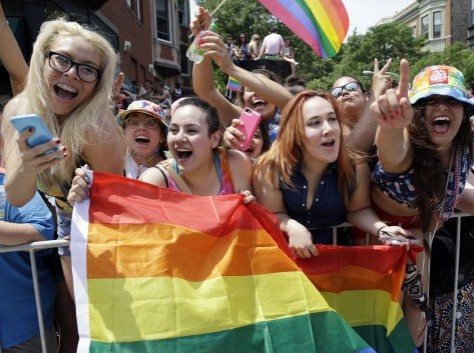
Since June is Pride Month, I thought it might be a good idea to take a look at some data to decide what we should be telling young people about homosexuality. Although people on the secular left are very easily offended by any sort of disapproval these days, the safest approach is still to present the scientific facts – maybe from behind an alias (just for safety).
From the left-leaning Atlantic Monthly.
Excerpt:
Data on the rates of same-sex partner abuse have only become available in recent years. Even today, many of the statistics and materials on domestic violence put out by organizations like the Center for Disease Control and the Department of Justice still focus exclusively on heterosexual relationships, and specifically heterosexual women. While the CDC does provide some resources on its website for the LGBT population, the vast majority of the information is targeted at women. Materials provided by the CDC for violence prevention and survivor empowerment prominently feature women in their statistics and photographs.
In 2013, the CDC released the results of a 2010 study on victimization by sexual orientation, and admitted that “little is known about the national prevalence of intimate partner violence, sexual violence, and stalking among lesbian, gay, and bisexual women and men in the United States.” The report found that bisexual women had an overwhelming prevalence of violent partners in their lives: 75 percent had been with a violent partner, as opposed to 46 percent of lesbian women and 43 percent of straight women. For bisexual men, that number was 47 percent. For gay men, it was 40 percent, and 21 percent for straight men.
The most recent statistics available on same-sex intimate partner violence from the National Coalition of Anti-Violence Programs, which focuses on LGBT relationships, reported 21 incidents of intimate partner homicides in the LGBT community, the highest ever. Nearly half of them were gay men and, for the second year in a row, the majority of survivors were people of color—62 percent.
In 2012, NCAVP programs around the country received 2,679 reports of intimate partner violence, a decrease of around 32 percent from 2011. However the report noted that many of the NCAVP’s member organizations were operating at decreased capacity due to limiting the number of cases they were able to take. The report said that excluding data from organizations, there was actually a 29 percent increase in reports of violence from 2011 to 2012.
That article comes from a source with a very clear pro-gay-agenda bias, so let’s take a look at an article from the Family Research Council to balance it out. They rely on mainstream data sources as well, like the CDC, the DOJ, the US Census, etc.
Excerpt:
A study in the Journal of Interpersonal Violence examined conflict and violence in lesbian relationships. The researchers found that 90 percent of the lesbians surveyed had been recipients of one or more acts of verbal aggression from their intimate partners during the year prior to this study, with 31 percent reporting one or more incidents of physical abuse.[69]
In a survey of 1,099 lesbians, the Journal of Social Service Research found that “slightly more than half of the [lesbians] reported that they had been abused by a female lover/partner. The most frequently indicated forms of abuse were verbal/emotional/psychological abuse and combined physical-psychological abuse.”[70]
In their book Men Who Beat the Men Who Love Them: Battered Gay Men and Domestic Violence,D. Island and P. Letellier report that “the incidence of domestic violence among gay men is nearly double that in the heterosexual population.”[71]
[…]Homosexual and lesbian relationships are far more violent than are traditional married households:
The Bureau of Justice Statistics (U.S. Department of Justice) reports that married women in traditional families experience the lowest rate of violence compared with women in other types of relationships.[72]
A report by the Medical Institute for Sexual Health concurred,
It should be noted that most studies of family violence do not differentiate between married and unmarried partner status. Studies that do make these distinctions have found that marriage relationships tend to have the least intimate partner violence when compared to cohabiting or dating relationships.[73]
In lesbian relationships, the rate of domestic violence is extremely high, from 17% to 45%, depending on the study. I do think that men exert a calming influence on women’s emotions, helping them to channel their feelings into words and reasoned arguments. That short-circuits the tendency toward violent outbursts. That’s why I urge men, if they must marry, to practice disagreeing and debating with women before the marriage is actualized. You need to find out what this other person does in a conflict situation before you commit to her for life.

